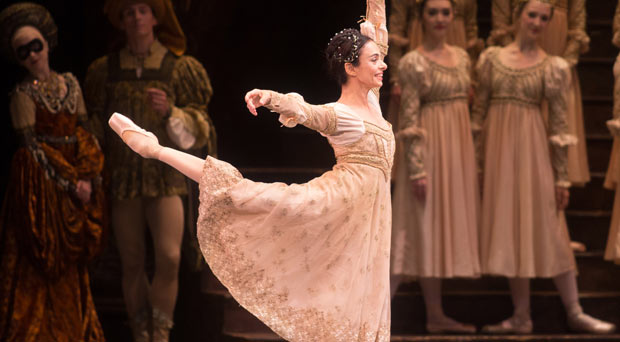
© Rosalie O’Connor. (Click image for larger version)
American Ballet Theatre
Romeo and Juliet
★★★★✰
New York, Metropolitan Opera House
23 June 2016
www.abt.org
Falling in Love Again
It was one of those nights ballet does so well, though there were no streamers and no mountains of bouquets (“only” three). A tribute to a beloved dancer, a moment many will cherish in their memories: the return of Alessandra Ferri to one of her most iconic roles, Juliet in Kenneth MacMillan’s 1965 production of Shakespeare’s tragic love story.
The Metropolitan Opera was packed to the gills; people brought their kids. Dancers and former dancers greeted each other in the aisles. Most of the audience, it seemed, had admired Ferri for decades and was back to relive the Ferri experience just one more time. The audience’s collective memory of her was as strong as the drama unfolding onstage. There was a special electricity among the dancers as well, a sense of occasion. At the curtain calls, several performers looked visibly moved, though Ferri herself stayed calm, serene, her big eyes gleaming. One can only imagine the satisfaction of dancing such a role at the age of 53, to a full house, among friends. The ovations were rapturous and went on for a long time.
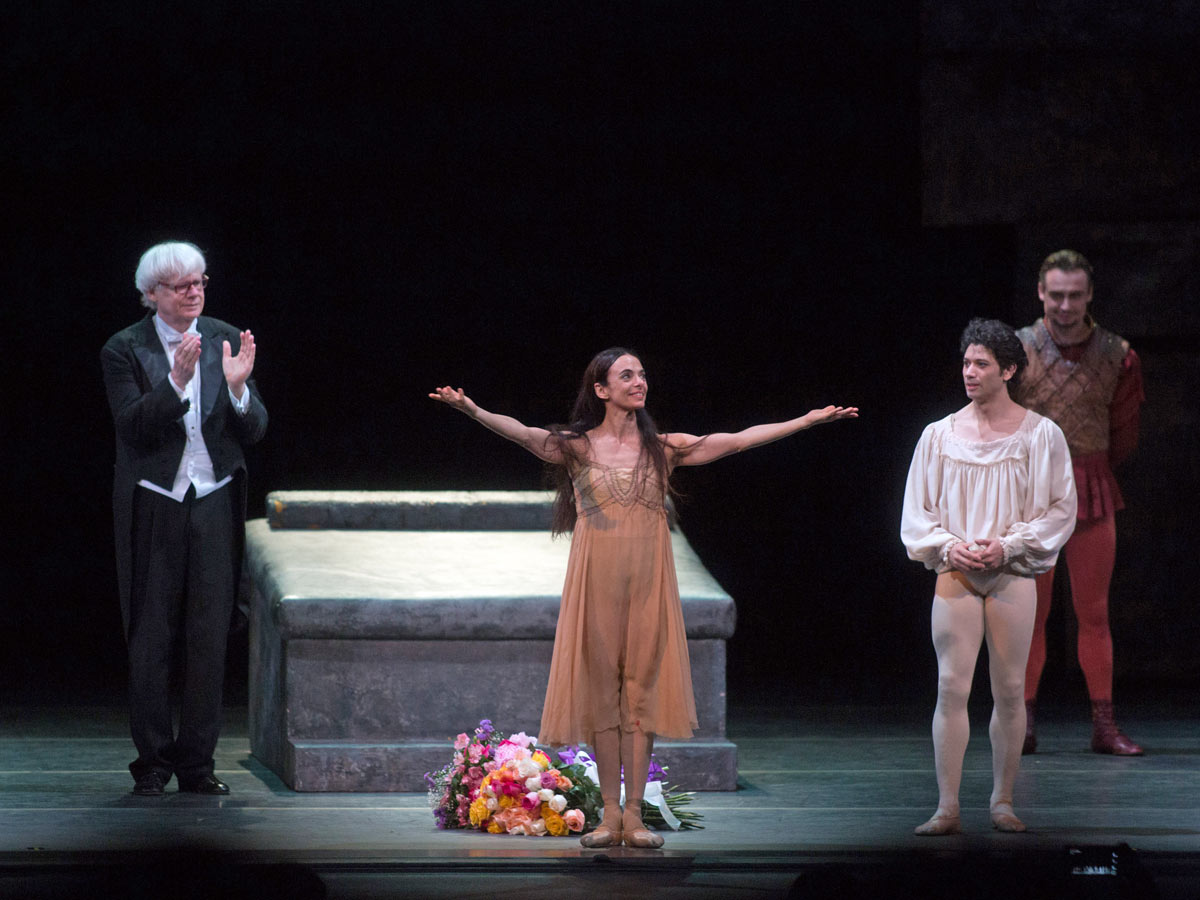
© Rosalie O’Connor. (Click image for larger version)
Ferri’s performance was exactly what one would expect from a dancer of her reputation. Meticulously prepared, carefully paced, and, in the end, intensely and passionately inhabited. Juliet is her role: headstrong, emotionally vulnerable, hungry. Who can forget her performances with Julio Bocca in the 90’s and early 2000’s, when it looked as if the two might quite simply combust in each other’s arms?
This was the ballet with which she took her leave in 2007 in a fiery performance partnered by the hunky and ever-gallant Roberto Bolle. Nine years have passed, almost seven of which were away from the stage, and she is no longer the same dancer, needless to say. The one danger of a tribute like this one is the fear that the artist will not live up to her own standard, burned in people’s memories.
The weight of the moment manifested itself in the early scenes of the ballet; it wasn’t until the balcony scene that she found her stride. Her bourrées in her first entrance were tentative, the running steps less impulsive than they once were. (Her relationship with her nurse, Susan Jones, was as affectionate and moving as ever.) The acting, here and in the party scene, was a little tight – lots of shrugs and eye-rolls – maybe a symptom of nerves. It’s not easy to recapture that child-like innocence.
But as the love story heated up, so did she. The balcony pas de deux, though more halting than it once was – each run was punctuated by a little pause before launching into Romeo’s arms – palpitated with nervous emotion. Her suppleness and ability to mold herself to her partner (Herman Cornejo) were unchanged. As she wrapped herself around Romeo’s shoulders in the first of many lifts, she once again became the open, vulnerable lover, giving into the emotional sweep of the moment. That she and Cornejo share significant chemistry only added to the melting sensuousness of the scene. But the high point was not the dancing. It was the moment just before the kiss. Ferri stopped cold and slowly, hesitantly turned toward Cornejo, leaning slightly back and away from him, her enormous eyes like two pools filled with every emotion: fear, vulnerability, need, excitement. She held the moment for as long as possible – when the kiss finally came, it was almost a relief.
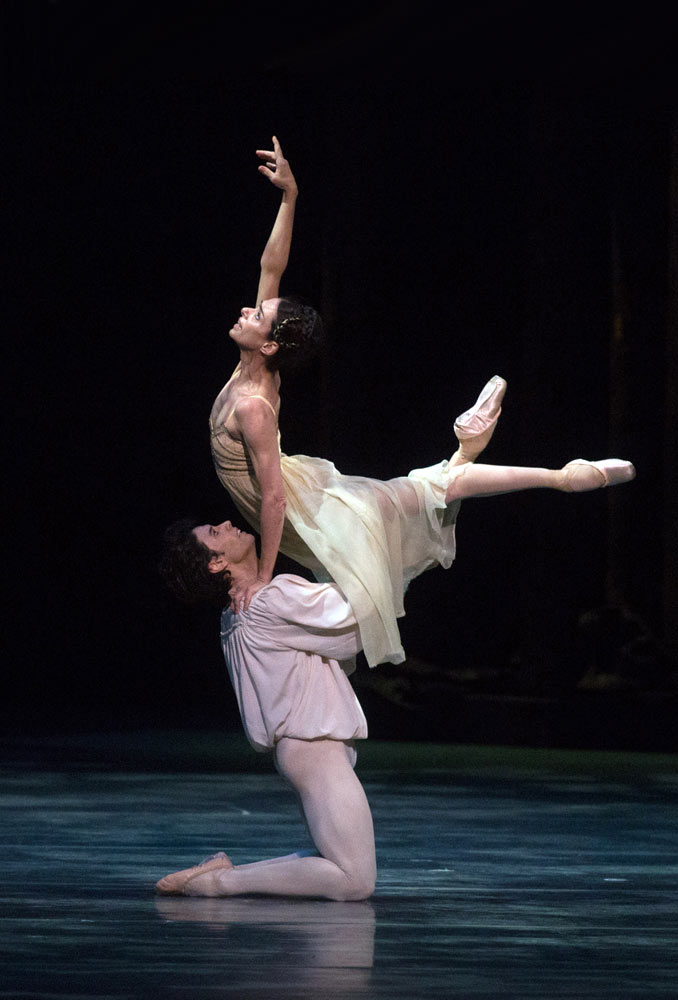
© Rosalie O’Connor. (Click image for larger version)
By the bedroom scene, she was back in the zone. Her hair, now loose, fell in dark, heavy cascades down her back, sometimes covering her face in the middle of a turn or as she twisted in her lover’s arms. It became an important element of her interpretation, an outward manifestation of her vitality. Here, unburdened by the need to feign childishness or execute classically pure steps, she could allow herself to melt into the character, unleashing her arsenal of vulnerability, determination and desperation. The scene with Paris, the betrothed she does not love, was particularly macabre. She didn’t play dead, the way many ballerinas do, but rather appeared angry, grim, almost revolted. Her entire body rejected the young suitor, who, in response, became brutal, even violent. There was no doubt about what was happening – this was rape.
The whole company rose to the occasion. Herman Cornejo, a bit subdued at first, thrilled in the second and third acts. A diagonal of fast, powerful sauts de basque created an eruption of applause. His chainé turns, too, were beautiful: fast, tight, and executed on very high relevé (on the tips of his toes), as if on pin-pricks. He’s a warm, effusive partner, and dashing in the crowd scenes, pal-ing around with the guys or flirting with the harlots who play such a big part in this production.
Sterling Baca made quite an impression in his début as Paris: elegant, at first gentle, ultimately brutal. It’s a shame he’s leaving the company (for Pennsylvania Ballet) – he might have made a good Romeo at ABT, and soon. Craig Salstein’s Mercutio was sharp, clipped, and well timed, even if his facial expressions sometimes veered into over-clownishness. Stella Abrera oozed glamor as Lady Capulet; her relationship with Tybalt, glimpsed in a few stolen moments, left no doubt about their mutual attraction. After his death, she seemed to float across the stage in a tragic haze.
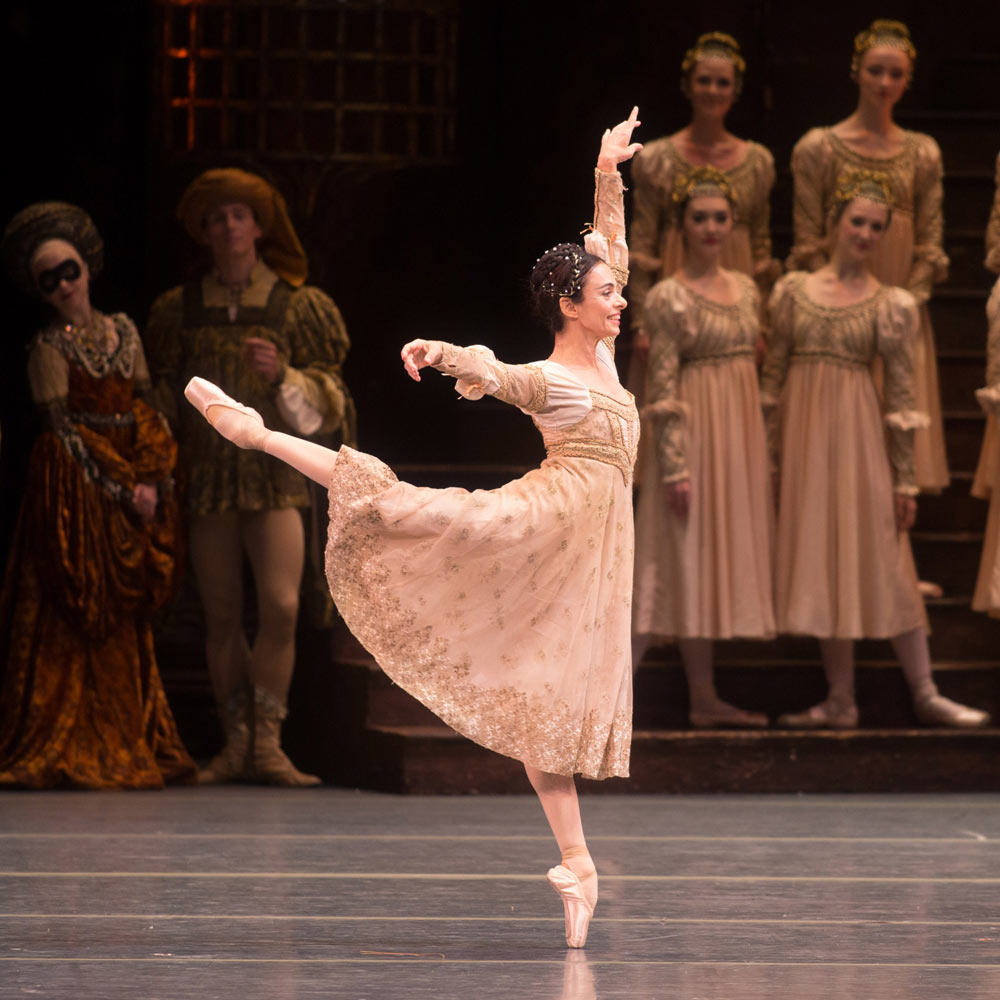
© Rosalie O’Connor. (Click image for larger version)
Roman Zhurbin gave one of the finest performances of Tybalt I’ve seen: mocking, proud, noble, sophisticated. Not the usual thug. In the opening piazza scene, he exhibited a supreme calm, wagging his finger at Romeo and his friends, treating them like silly boys. You would be forgiven for rooting for him. Then, in the second act, he returned, drunk and mean. The swordfights were exciting, his death staggering. As I watched him, I had the thought: if he were a singer, he would make an excellent Scarpia in Tosca.
So it was a good night at the ballet, and above all, an event to remember: that night Alessandra returned to the Met stage to perform Romeo and Juliet one last time, a second farewell of sorts.













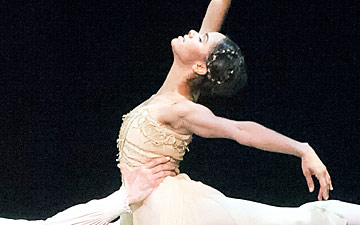
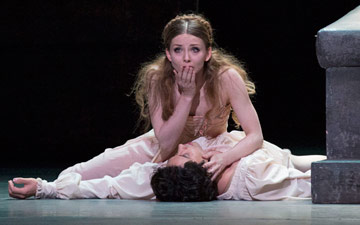
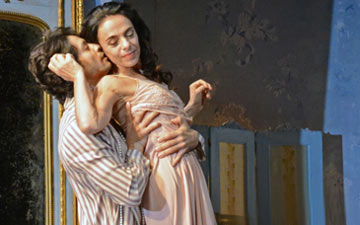

You must be logged in to post a comment.